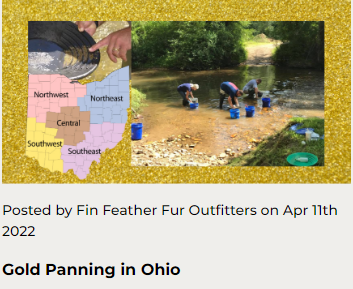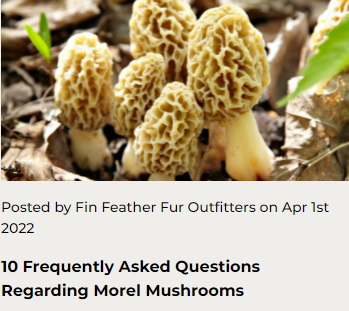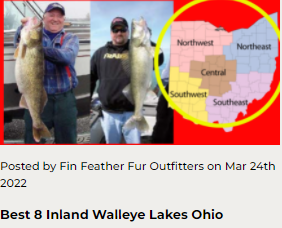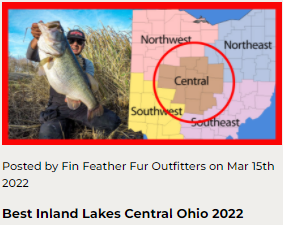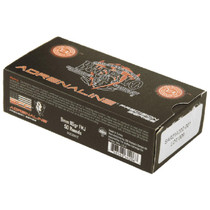Ohio Hog Hunting 2022
Posted by Fin Feather Fur Outfitters on Apr 18th 2022

Ohio’s ODNR encourages hunters to harvest any feral hogs they encounter in the wild to limit the spread of swine populations. Feral hogs are primarily nocturnal, spending their days resting in dense vegetation or wallowing in mud holes. Feral hogs are considered nuisance animals and may be legally harvested 365 days per year 24 hours a day. You must have a valid Ohio hunting license unless you are a landowner hunting on your own property. A valid Ohio deer permit is also required during deer gun seasons and hunters can only use firearms legal for that season. Dogs are legal as well as is nighttime hunting. Baiting is permissible on private land as well as live trapping. If a hog is live trapped it must be killed.Hunters who are interested in hunting feral hogs can begin by targeting the public hunting areas listed below. Although the state of Ohio does not create a list of farmers with crop damage the public hunting area can serve as a starting point for gaining access to adjacent private property.
Public Hunting Areas
Broken ARO and Flint Run Wildlife Areas – Jackson County
Cooper Hollow Wildlife Area – Jackson County
Egypt Valley Wildlife Area (infrequent reports) – Belmont and Guernsey counties
Jockey Hollow Wildlife Area (infrequent reports) – Belmont and Harrison
counties
Vinton Furnace State Forest - Vinton County
Wallace H. O’Dowd Wildlife Area – Athens and Hocking counties
Superior Wildlife Area – Vinton County
Turkey Ridge Wildlife Area – Vinton County
Wellston Wildlife Area – Vinton County
Zaleski State Forest Richland Furnace – Vinton and Athens counties
Tar Hollow State Forest – Hocking County
National Forest Ironton District – Lawrence County
Wayne National Forest Athens District – Athens County
Richland Furnace State Forest – Jackson and Vinton counties
Wayne National State Forest, Ironton District – Lawrence County
FERAL HOG INFO
Feral hogs are a cross of wild boar and domesticated pigs that have been left
to roam. Russian wild boar were first introduced in the United States in 1539
and are now present in 35 states. Feral swine cause considerable damage to
agricultural crops and property.
Feral hogs vary greatly in appearance even within the same family unit. The
colors will vary from black, gray, brown and even include striping or spots.
Most feral hogs in Ohio will vary from 125 to 200 lbs. although some will grow
to 350 lbs
.
Breeding Habits
Feral hogs are prolific breeders and typically will reach sexual maturity at 8
months of age and can breed year-round. They will normally have two litters per
year with 7-10 in each litter. Male feral hogs are solitary while females live
within family units.
Currently, verified and known breeding populations of feral hogs have been
confirmed in Adams, Ashtabula, Athens, Belmont, Gallia, Hocking, Jackson,
Lawrence, Monroe, Ross, Scioto, and Vinton counties.
Feral hogs in Ohio prefer corn and soybeans and tend to be the most sought
after agricultural food source. They will also cause damage to turnips,
watermelon, squash, orchards, and timber. In 2000 it was estimated that feral
pigs did 800 million in damage each year nationwide and the population has
grown considerably since then.
Rooting Feral hogs are often referred to as “living rototillers” due to their
destructive digging in search of roots, tubers, eggs, and invertebrates.
Rooting can range from a depth of 2 inches to 2 feet.
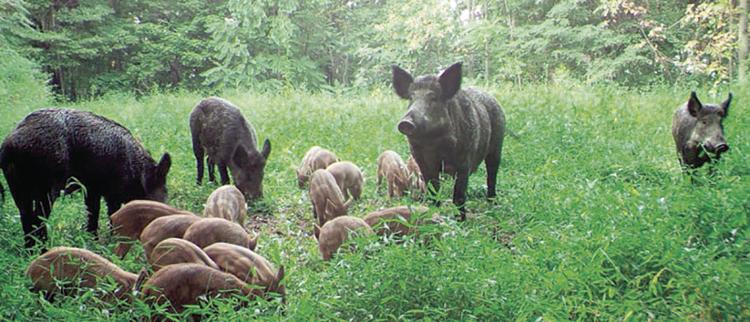
Water Quality
Feral hogs seek out wet areas to roll in the mud or “wallow” during hot summer
months. The wallows range in size from mud puddles to slurries exceeding 300
square feet, which severely damage downstream water.
Predation
Feral hogs will eat almost anything in their path. As a predator, feral hogs
will consume the young of larger animals such as white-tailed deer and
livestock. Feral hogs will also feed on the eggs and young of ground-nesting
birds, reptiles, and amphibians.
Competition
Feral swine compete with native wildlife species for acorns that would normally
be cached by squirrels and other rodents or used to boost winter body fat by
white-tailed deer, raccoons, and wild turkeys, and are consumed at an alarming
rate by feral swine.
Conclusion
While there may not be an abundant supply of Feral Hogs in Ohio it is an
opportunity to get out of the house and explore some new territory with the
possibility of adding some pork to your freezer.




